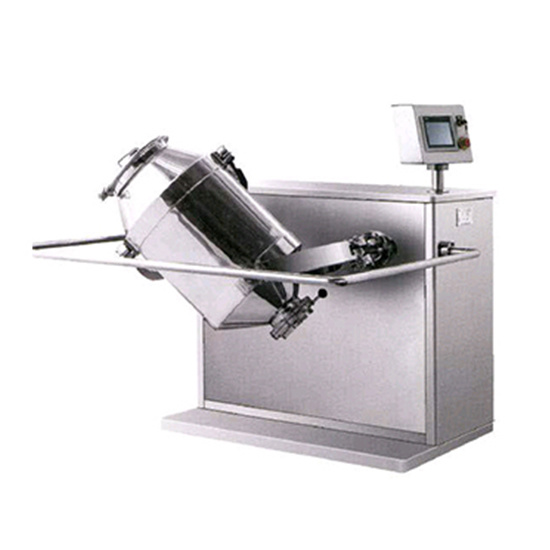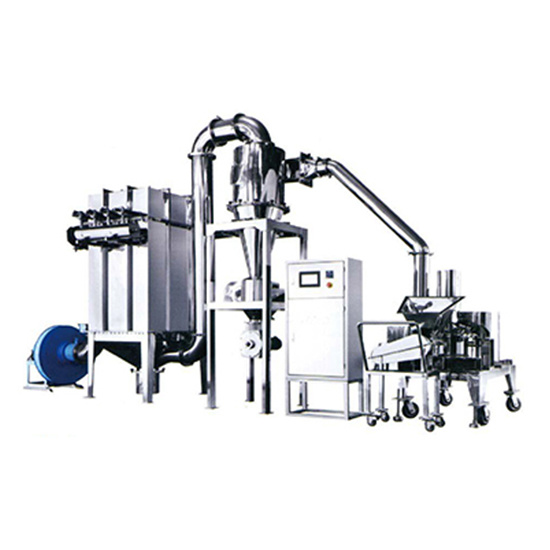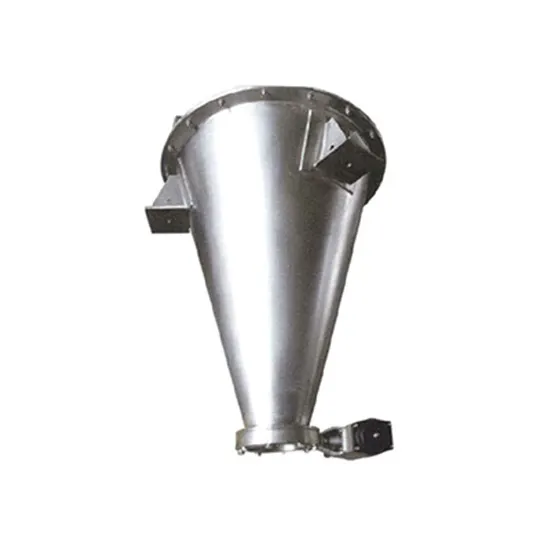NEWS
Analyzing the Cost-Benefit Ratio of Swing Granulation Systems: A Comprehensive Guide for Industry Professionals
Jul 04,2025
Analyzing the Cost-Benefit Ratio of Swing Granulation Systems
Table of Contents
- Introduction to Swing Granulation Systems
- Understanding the Granulation Process
- Cost Analysis of Swing Granulation Systems
- Benefit Analysis of Swing Granulation
- Key Factors Affecting Cost-Benefit Ratio
- Comparative Analysis with Other Granulation Systems
- Case Studies and Real-World Examples
- Frequently Asked Questions
- Conclusion
Introduction to Swing Granulation Systems
Swing granulation systems serve as a pivotal element in various industries, especially in pharmaceuticals and food production. These systems facilitate the efficient transformation of powders into granules, thereby enhancing product flow and ensuring uniformity in particle sizes. Understanding the **cost-benefit ratio** of implementing swing granulation systems is crucial for businesses aiming to optimize their production processes while maintaining profitability.
Understanding the Granulation Process
Granulation is the process of agglomerating fine particles into a granule form. This is typically achieved through a series of steps involving the application of moisture and mechanical forces. Swing granulation specifically employs a unique motion that ensures even distribution of materials, leading to consistent granule formation.
The Importance of Granulation in Production
Granulation is vital in enhancing the **flowability**, **compressibility**, and **dissolution characteristics** of powders. In pharmaceuticals, for instance, granulated materials are easier to compress into tablets, ensuring uniform dosing and better bioavailability.
Cost Analysis of Swing Granulation Systems
To evaluate the cost-effectiveness of swing granulation systems, we must consider several elements, including acquisition costs, operational expenses, maintenance costs, and potential downtime.
1. Acquisition Costs
The initial investment in a swing granulation system can be significant. This includes the purchase price of the machinery, installation expenses, and any necessary modifications to existing infrastructure. Understanding these costs upfront allows businesses to budget adequately and assess ROI.
2. Operational Expenses
Operational costs encompass energy consumption, labor, and materials used during the granulation process. Swing granulation systems are designed to be energy-efficient, but it is essential to monitor these expenditures continually to ensure ongoing cost-effectiveness.
3. Maintenance Costs
Like all mechanical systems, swing granulators require regular maintenance to operate at peak efficiency. This includes routine inspections and repairs, which contribute to the overall cost structure. Businesses must factor in these expenses when conducting a cost-benefit analysis.
4. Potential Downtime
Downtime due to maintenance or breakdowns can significantly impact the bottom line. It's crucial to have a plan for minimizing downtime and to evaluate the cost implications of any operational interruptions.
Benefit Analysis of Swing Granulation
Evaluating the benefits of swing granulation systems involves looking at improved product quality, increased efficiency, and enhanced production capabilities.
1. Improved Product Quality
One of the most significant benefits of swing granulation systems is the improved quality of granules produced. Consistent particle size leads to better flow properties and uniformity in dosage forms, which is crucial in pharmaceutical applications.
2. Increased Production Efficiency
Swing granulation systems can significantly enhance production rates. Their efficient design allows for quicker processing times, reducing wastage and maximizing throughput.
3. Flexibility and Versatility
These systems can handle a variety of materials and formulations, making them versatile for different applications across industries. This flexibility can help businesses adapt to changing market demands more readily.
Key Factors Affecting Cost-Benefit Ratio
Several factors influence the cost-benefit ratio of swing granulation systems:
1. Material Characteristics
The nature of the materials being processed can significantly affect performance and costs. Variations in moisture content, bulk density, and particle size can influence the efficiency of the granulation process.
2. Technological Advancements
Investing in the latest technology can improve the **efficiency** and **capabilities** of swing granulation systems, thus enhancing their cost-benefit ratio. Automation, for instance, can reduce labor costs and increase precision.
3. Regulatory Compliance
Compliance with industry regulations can incur additional costs but can also improve product quality and safety, ultimately benefiting the organization in the long run.
Comparative Analysis with Other Granulation Systems
Conducting a comparative analysis with other granulation systems, such as high-shear granulators or fluid bed granulators, can provide invaluable insights into the advantages and disadvantages of swing granulation systems.
1. High-Shear Granulators
High-shear granulators often offer faster granulation times; however, they may not produce granules with the same uniformity as swing granulators.
2. Fluid Bed Granulators
Fluid bed granulators are known for their efficiency in drying and granulating simultaneously. However, they come with more complex operational requirements and higher maintenance costs.
Case Studies and Real-World Examples
Examining real-world applications of swing granulation systems can illustrate their effectiveness and ROI.
Example 1: Pharmaceutical Company A
A pharmaceutical company used a swing granulation system to improve its tablet manufacturing process. The switch resulted in a 30% increase in production efficiency and a significant reduction in reject rates due to improved granule consistency.
Example 2: Food Processing Company B
A food processing operation implemented swing granulation for a new product line, achieving enhanced flowability and reduced production times, ultimately leading to increased market competitiveness.
Frequently Asked Questions
1. What is a swing granulation system?
Swing granulation systems are specialized machines used to produce granules from fine powders by employing a swinging motion that ensures even material distribution and consistency.
2. What are the main benefits of using swing granulators?
The primary benefits include improved product quality, increased production efficiency, and flexibility in handling various materials.
3. How do acquisition costs compare to operational costs?
Acquisition costs include the initial expense of the equipment, while operational costs refer to ongoing expenses such as energy, labor, and maintenance.
4. Can swing granulation systems reduce production downtime?
Yes, with proper maintenance and operational practices, swing granulation systems can minimize downtime, leading to more efficient production schedules.
5. Are swing granulators suitable for all industries?
While primarily used in pharmaceuticals and food production, swing granulators can be adapted for various applications across numerous industries due to their versatility.
Conclusion
In conclusion, analyzing the **cost-benefit ratio** of swing granulation systems reveals a complex interplay of costs and benefits that can significantly impact a business's production efficiency and profitability. By considering factors such as acquisition costs, operational expenses, and the unique advantages of swing granulation, industry professionals can make informed decisions that align with their operational goals. Investing in swing granulation systems can yield substantial returns when approached strategically, ultimately enhancing the competitive edge in a rapidly evolving market.
More News










